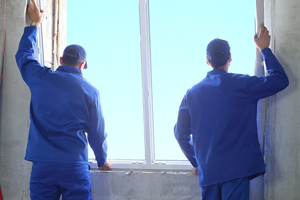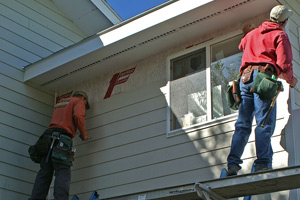Our companies are backed by the Best Pick Guarantee. Call one today!
Home ownership comes with a seemingly endless list of home improvement projects. Regardless of whether you decide to tackle the items on the list yourself or hire someone else to take care of them, it’s important to consider the optimal time of year for each project. If you live in a climate that is relatively mild all year, you may not be as constricted by the weather, but homeowners who live in parts of the country with four distinct seasons will need to be mindful of weather extremes. Read on for three home improvement projects that should wait for warmer temperatures.
1. Exterior House Painting
It may be tempting to wait until the winter, when the sun isn’t quite as intense, to paint your home’s exterior, but this is one project that is much better suited to warmer weather. Paint formulations have advanced considerably, but most exterior paints do not perform well below about 40 degrees Fahrenheit. In addition to temperature concerns, the cooler months of the year are typically wetter than the warmer months. Paint does not adhere well to damp surfaces, and the exterior of your home is much more likely to be slightly wet in the cool, moist air of the winter months.
2. Window Replacement

Technically speaking, windows can be replaced year round—barring extreme weather conditions, of course—but the ideal time of year for this particular exterior remodeling project is the spring, summer, or fall. Caulking around any seams or small openings is an important part of the window installation process, and caulk may not set and cure correctly in conditions that are too cold or too damp. In addition, varying levels of moisture in the air can cause wood and other materials to swell or contract, which can affect the proper fit of the windows.
3. Siding Replacement

Having your home’s siding replaced in the winter presents similar challenges to a winter window replacement job. Depending on the material used, siding can contract slightly in cold weather. When the temperatures start to rise in the spring, the siding may expand, creating an issue with the fit of the material if the installers didn’t leave room for expansion. Vinyl siding also carries the possibility of breaking or cracking in extremely cold conditions. Another important consideration is the time it takes to complete a siding job. Complete siding replacement jobs take several days to complete—and that’s assuming that the weather cooperates. Since your home’s siding provides an important barrier from the elements, removing that layer for several days in the winter will likely result in a noticeable increase in heating costs.
There are plenty of winter home improvement projects that aren’t quite so dependent on the weather. If taking a break during the cold weather isn’t part of your home renovation time line, try to stick to interior projects while you wait for the weather to warm up.


























